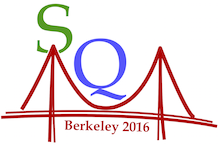Speaker
Liwen Wen
(UCLA)
Description
QCD allows for chirality imbalance as a consequence of vacuum transition. When coupled with a strong magnetic field produced in heavy-ion collisions, the chirality imbalance in local domains can lead to the electric charge separation along the magnetic field direction, manifested as the chiral magnetic effect (CME). Recently, an analogous effect, the chiral vortical effect (CVE) was also postulated, in which the vorticity of the collision system replaces the magnetic field, and a baryonic charge separation appears instead of an electric charge separation. In order to shed more light on the magnitude of the CME and CVE, we use identified particle correlation measurements of Au+Au collisions at $\sqrt{s_{NN}}=200$ GeV with the STAR detector to explore possible hierarchal structures in the particle-dependent correlations due to the CME and CVE. Four cases will be reported: proton-$K_s^0$ (no CME/CVE), proton-$\pi^{\pm}$ (CME only), proton-$\Lambda$(CVE only), and proton-proton (both CME and CVE). These measurements test the CME/CVE expectation of a charge separation ordering($pp\ > \ p\Lambda\ >\ p\pi^{\pm}\ >\ pK_s^0\sim\ 0$). Two pion correlations and the so-called H-correlator, useful for exploring the flow-related backgrounds, will also be discussed.
[1] D.E. Kharzeev, L.D. McLerran, H.J. Warringa, Nucl. Phys. A 803 (2008) 227.
[2] D.E. Kharzeev, D.T. Son, Phys. Rev. Lett. 106 (2011) 062301.
[3] S.A. Voloshin, Phys. Rev. C 70 (2004) 057901.
[4] A. Bzdak, V. Koch and J. Liao, Lect. Notes Phys. 871 (2013) 503.
| On behalf of collaboration: | STAR |
|---|
Author
Liwen Wen
(UCLA)
